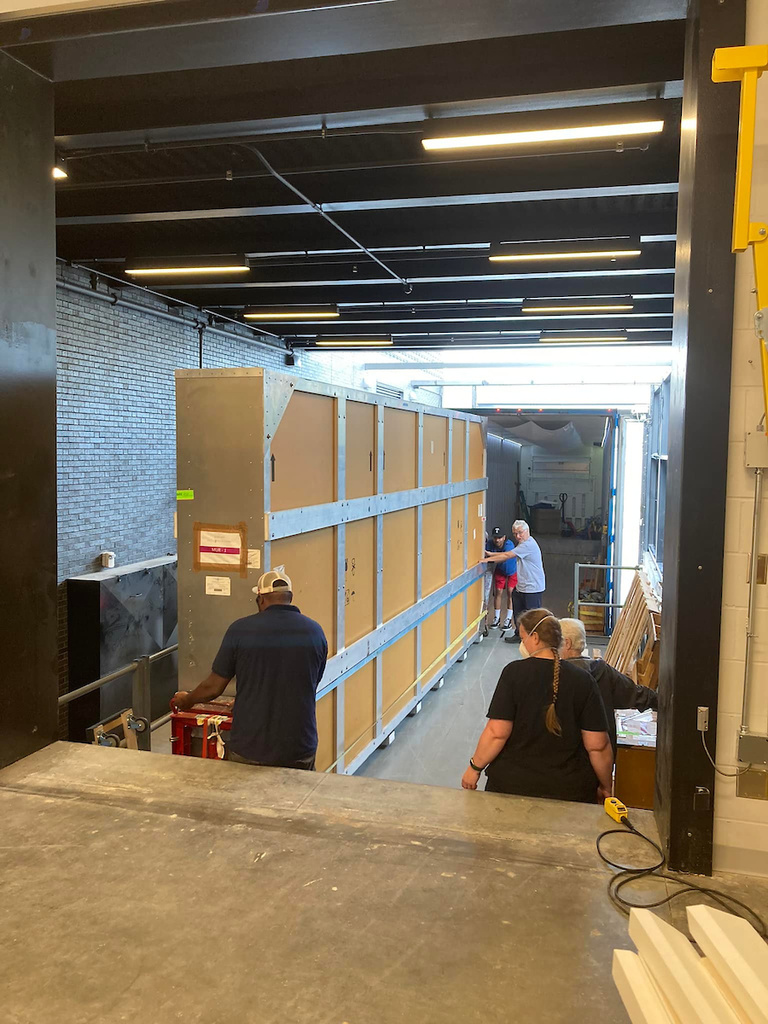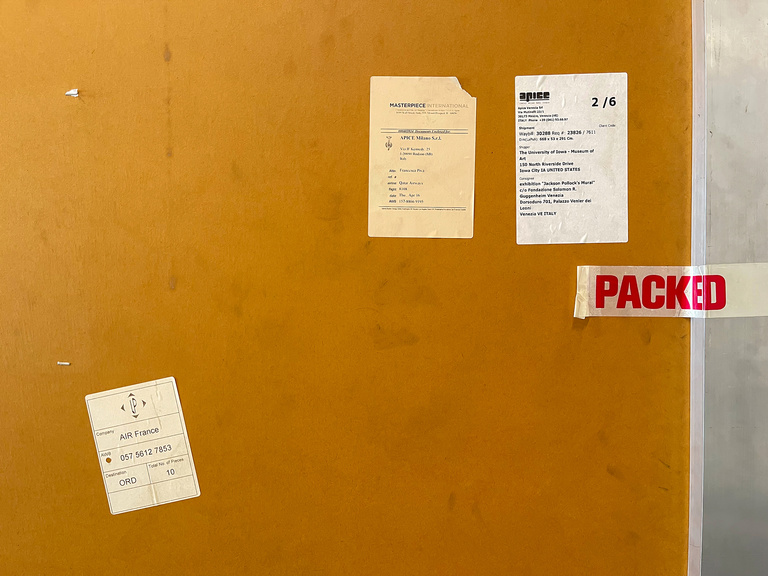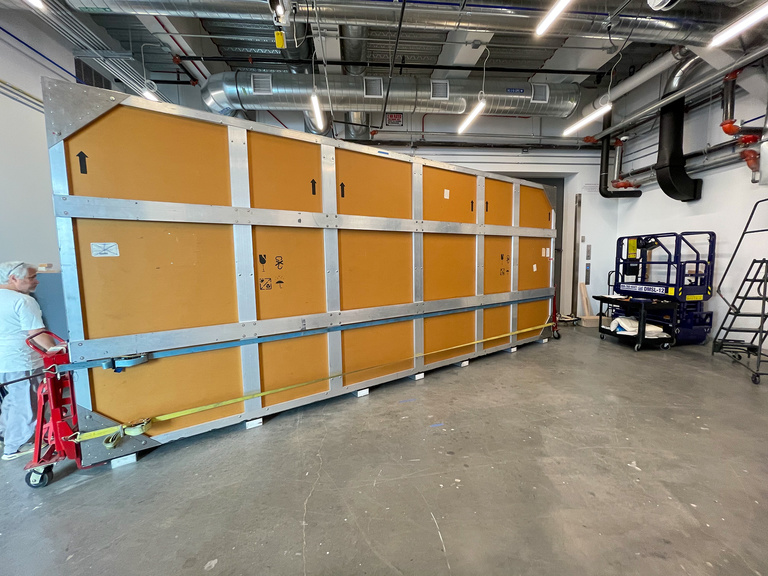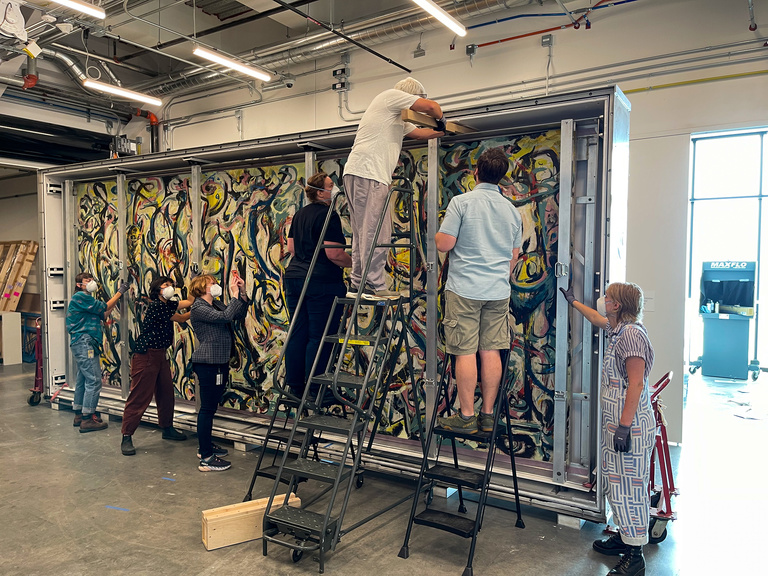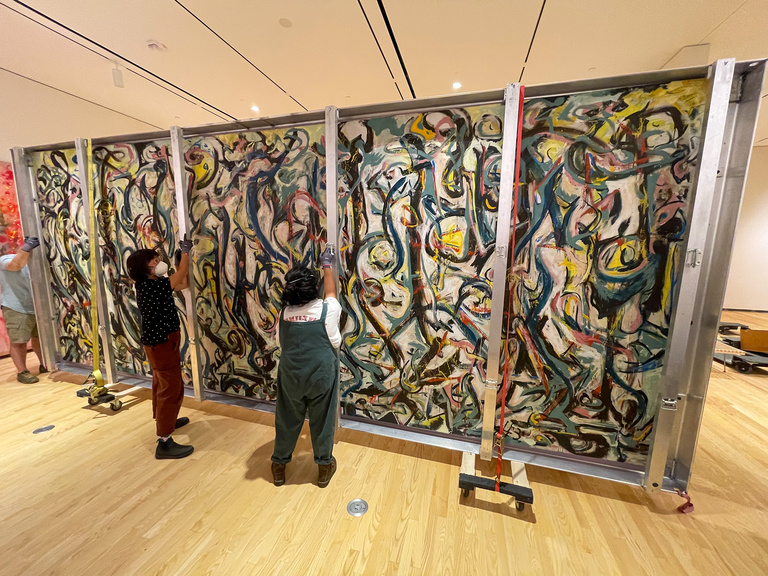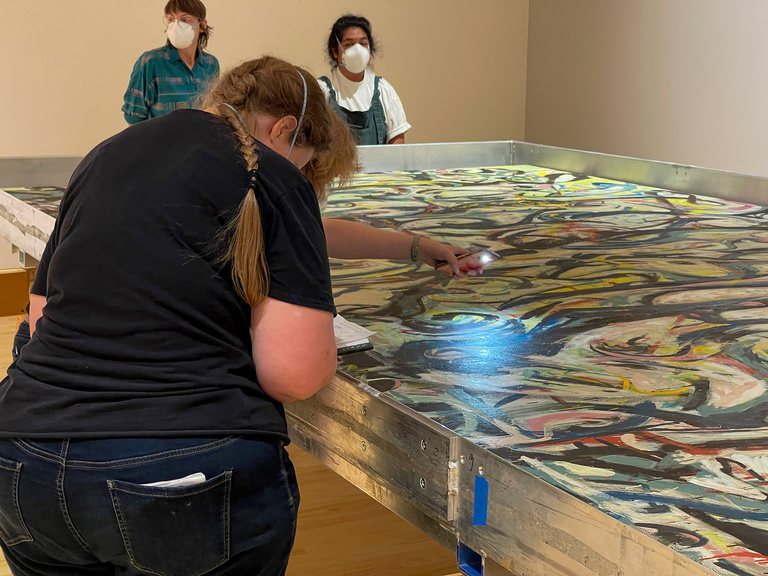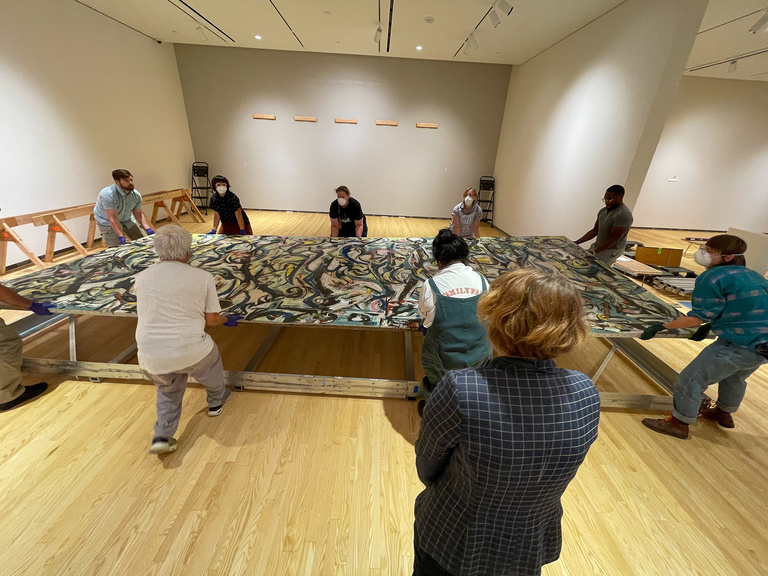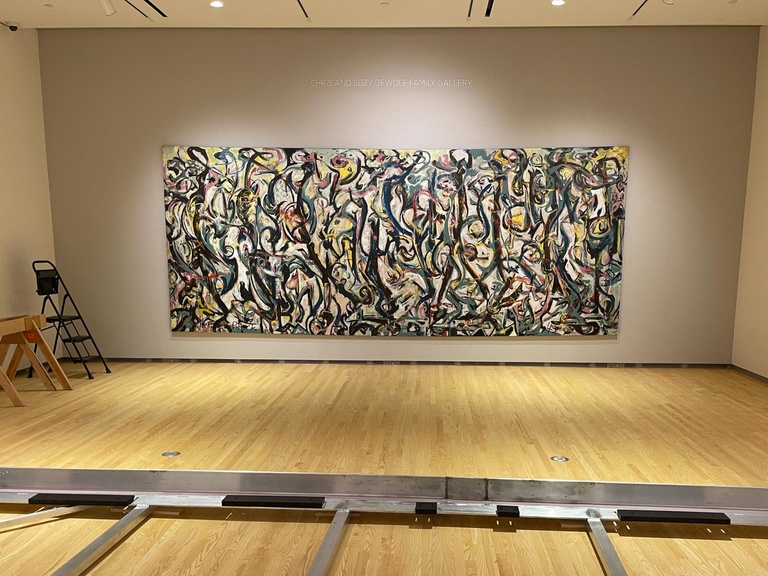After nine years touring Europe and the United States, Jackson Pollock’s Mural is finally home at the University of Iowa, where it will be on view when the UI Stanley Museum of Art reopens Aug. 26.
Stanley Museum of Art Director Lauren Lessing and museum collections staff welcomed Mural in its 3,200-pound crate on July 14. After acclimating to its new environment, Mural rode in the custom freight elevator to the second floor of the museum and is now permanently displayed in the Chris and Suzy DeWolf Family Gallery.
The 8-by-20-foot painting traveled more than 20,000 miles to 14 venues on trucks, cargo planes, and boats, and was viewed by more than 2.7 million people after leaving Iowa City on a planned world tour immediately after the 2008 flood. Mural marks a pivotal moment in Pollock’s career and is a beacon for art lovers everywhere.
The museum’s inaugural exhibition, Homecoming, will include Mural, as well as more than 600 works of art in all media by some 500 artists.
Volunteers needed
Be at the center of the action during the Aug. 26—28 grand opening celebration by volunteering to support a variety of activities throughout the museum. Find out more here.
“We are bringing home all the wonderful works of art that people have missed so much—the rock stars of the Stanley Museum of Art,” Lessing says.
The new Stanley Museum of Art building will be officially dedicated at 3 p.m. Aug. 26, followed by its grand-opening celebration Aug. 26—28.
‘MURAL’ ON THE ROAD
In 2012, Mural underwent a two-year technical study and conservation treatment by research scientists at the Getty Center in Los Angeles, followed by solo exhibitions at the J. Paul Getty Museum and the Sioux City Art Center in Sioux City, Iowa. Beginning in 2015, Mural was the centerpiece of an exhibition curated by David Anfam and organized by the UI Museum of Art, Jackson Pollock’s ‘Mural’: Energy Made Visible, which traveled to the Peggy Guggenheim Collection in Venice, Italy; Deutsche Bank Kunsthalle, Berlin; and Museo Picasso Málaga, Málaga, Spain. After the close of that exhibition in 2016, Mural anchored further exhibitions at the Royal Academy of Art, London; Guggenheim Museum, Bilbao, Spain; Nelson-Atkins Museum of Art, Kansas City, Missouri; National Gallery of Art, Washington, D.C.; Columbia Museum of Art, Columbia, South Carolina; Museum of Fine Arts, Boston; and the Solomon R. Guggenheim Museum, New York City.
ABOUT ‘MURAL’
Mural is considered by many to be the most important modern American painting ever made. Peggy Guggenheim, the leading dealer of modern art in New York during the 1940s, was eager to present in her home a symbol of support for the new American brand of art she was beginning to champion in her gallery. She commissioned Pollock to create a mural for her new townhouse. Pollock was to choose the subject, and the art’s size would be immense (more than 8 feet tall and 19 feet wide), meant to cover an entire wall. At the suggestion of Guggenheim’s friend and advisor Marcel Duchamp, it was painted on canvas, not the wall itself, so it would be portable. In 1947, Guggenheim closed her gallery and returned to Europe. She recognized the significance of the UI studio art program, wrote to Lester Longman, head of the UI School of Art and Art History, on Oct. 3, 1948, reminding him that she offered to give Mural to the university if he would pay to have it shipped from Yale. He responded immediately that indeed he was interested and began negotiating with university administration for the cost of freight. Finally, in October 1951, the painting was shipped to Iowa.
